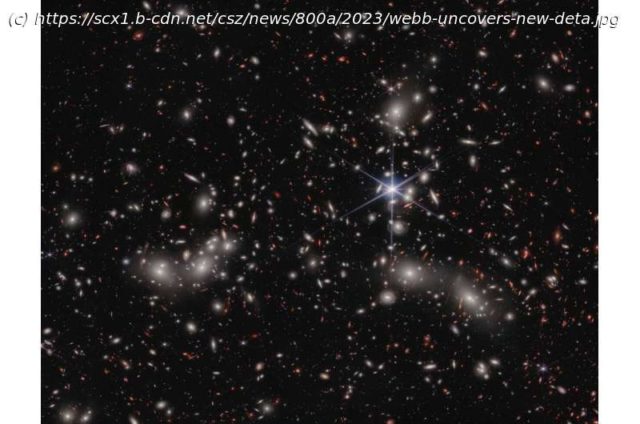Astronomers have revealed the latest deep-field image from the NASA/ESA/CSA James Webb Space Telescope, featuring never-before-seen details in a region of space known as Pandora’s Cluster (Abell 2744). Webb’s view displays three clusters of galaxies—already massive—coming together to form a megacluster.
Astronomers have revealed the latest deep-field image from the NASA/ESA/CSA James Webb Space Telescope, featuring never-before-seen details in a region of space known as Pandora’s Cluster (Abell 2744). Webb’s view displays three clusters of galaxies—already massive—coming together to form a megacluster.
The combined mass of the galaxy clusters creates a powerful gravitational lens, a natural magnification effect of gravity, allowing much more distant galaxies in the early universe to be observed by using the cluster like a magnifying glass.
Only Pandora’s central core has previously been studied in detail by the NASA/ESA Hubble Space Telescope. By combining Webb’s powerful infrared instruments with a broad mosaic view of the region’s multiple areas of lensing, astronomers aimed to achieve a balance of breadth and depth that will open up a new frontier in the study of cosmology and galaxy evolution.
Astronomers studied the region as part of the Ultradeep NIRSpec and NIRCam ObserVations before the Epoch of Reionization (UNCOVER) program. The new view of Pandora’s Cluster stitches four Webb snapshots together into one panoramic image, displaying roughly 50 000 sources of near-infrared light.
In addition to magnification, gravitational lensing distorts the appearance of distant galaxies, so they look very different from those in the foreground. The galaxy cluster « lens » is so massive that it warps the fabric of space itself, enough for light from distant galaxies that passes through that warped space to also take on a warped appearance.






